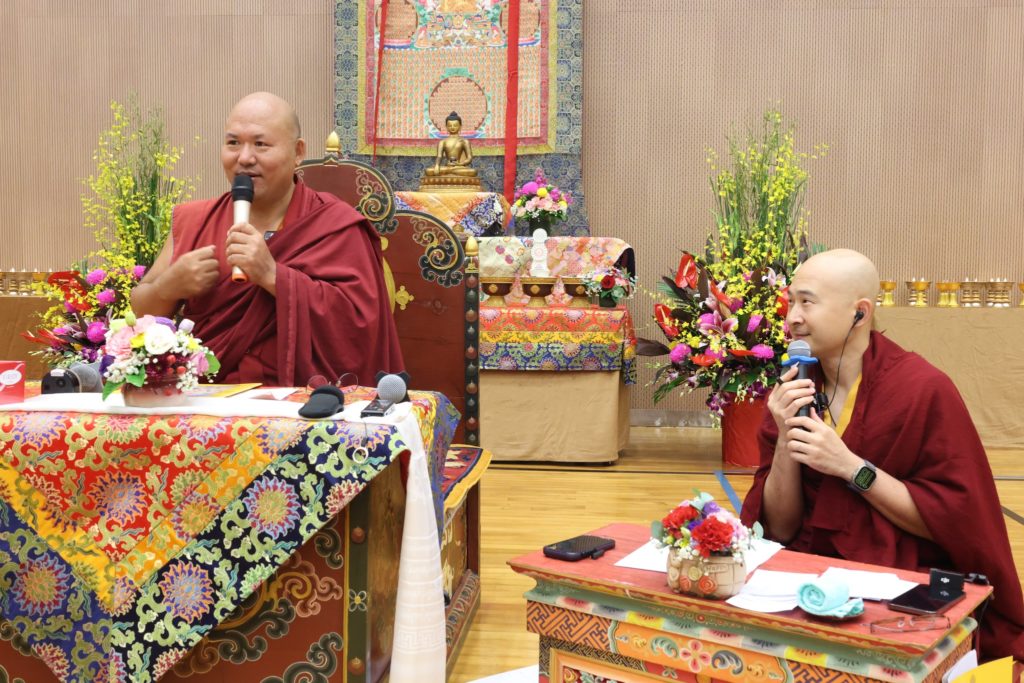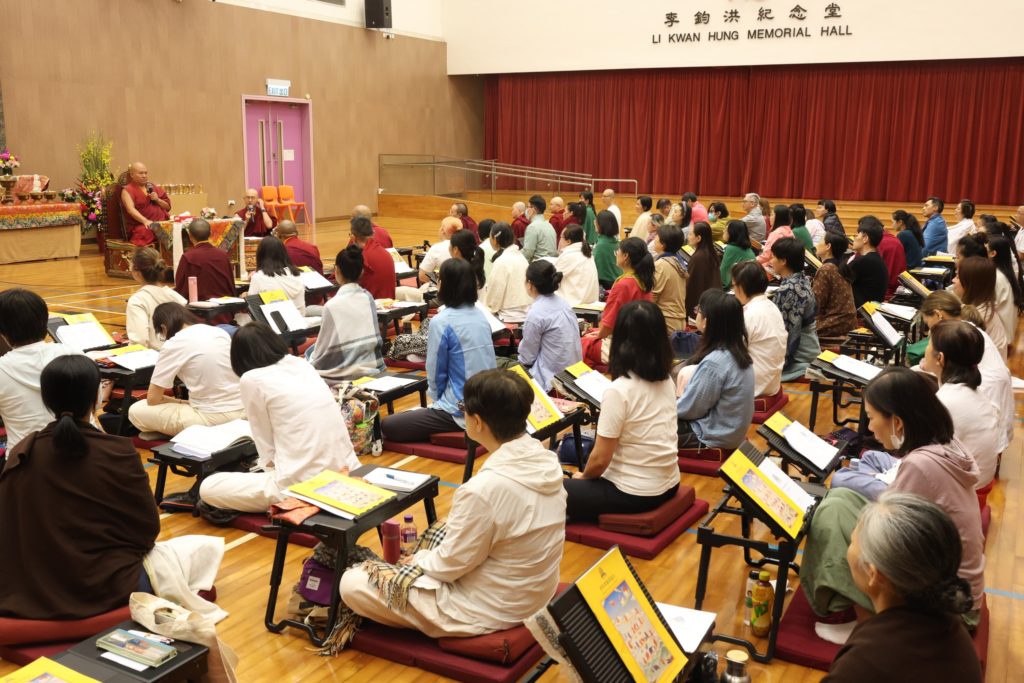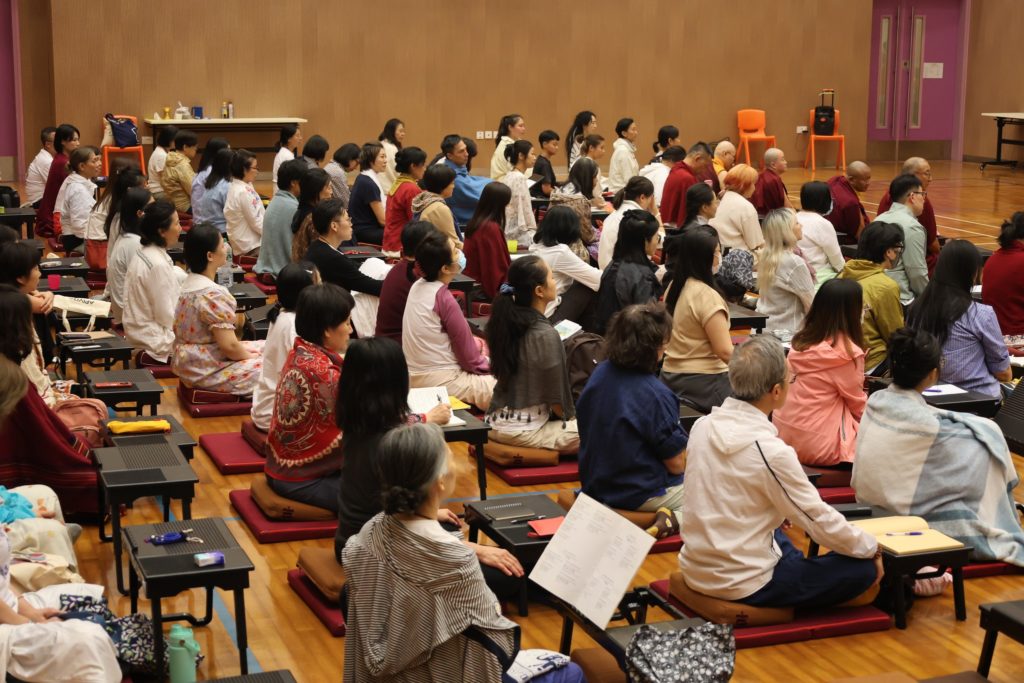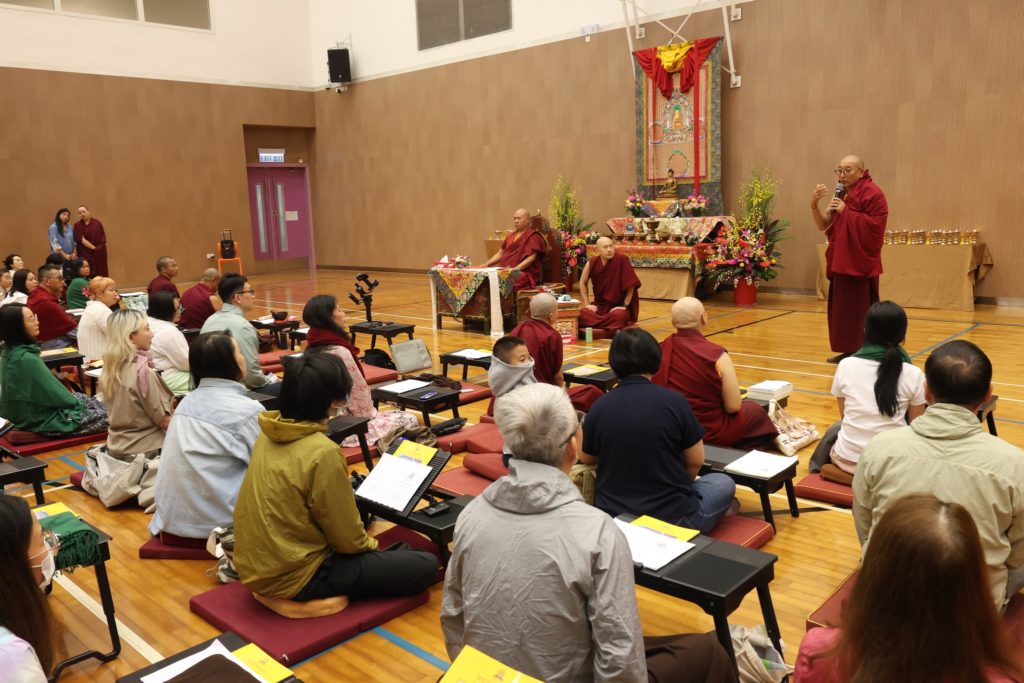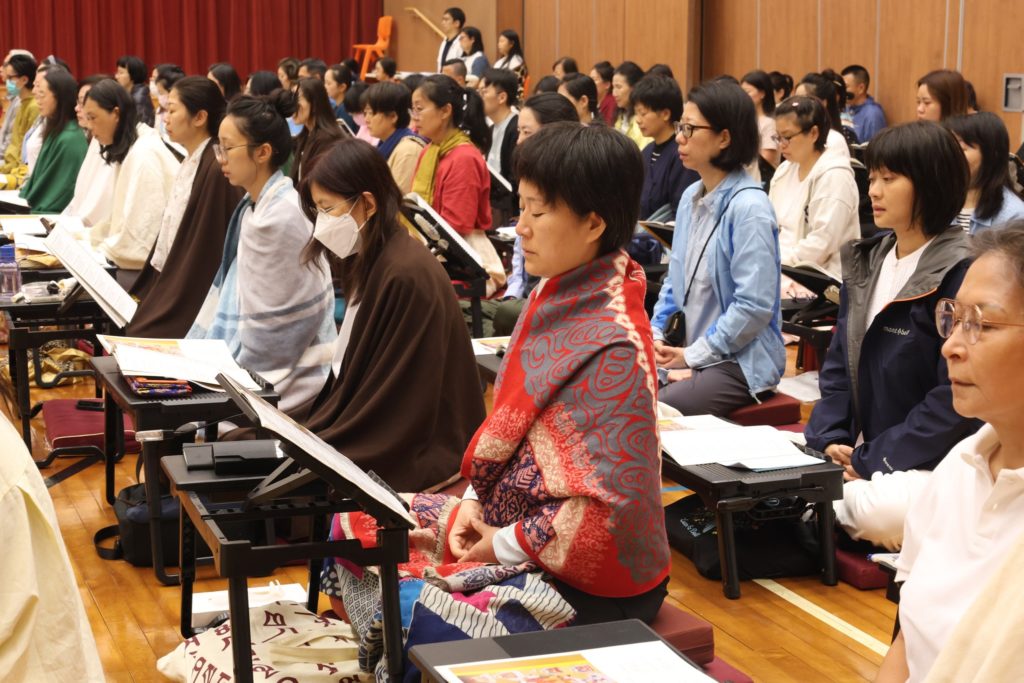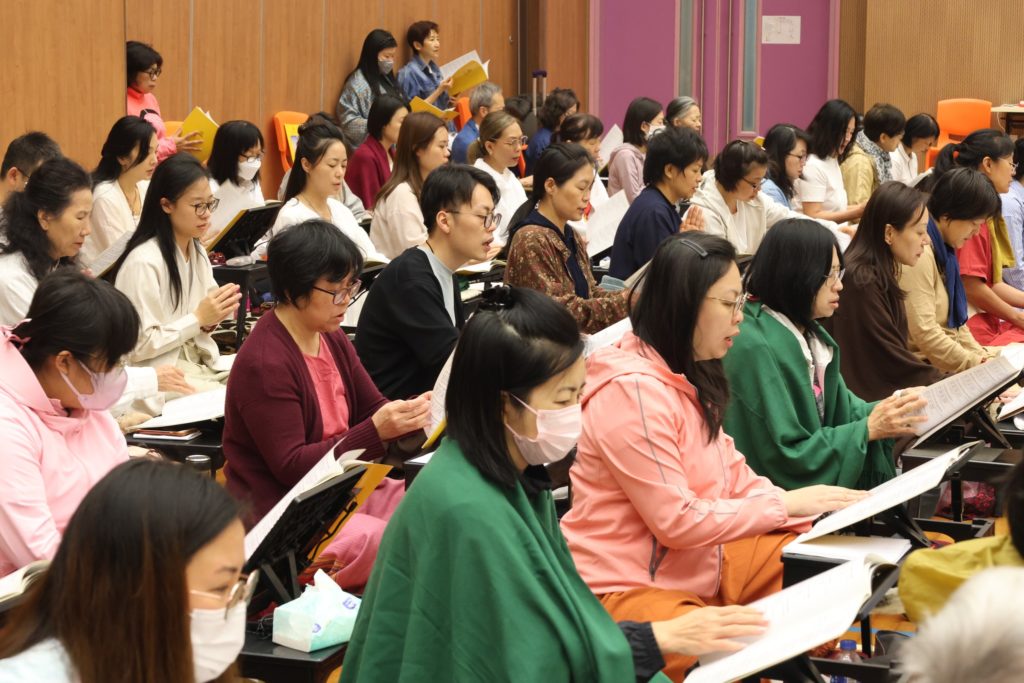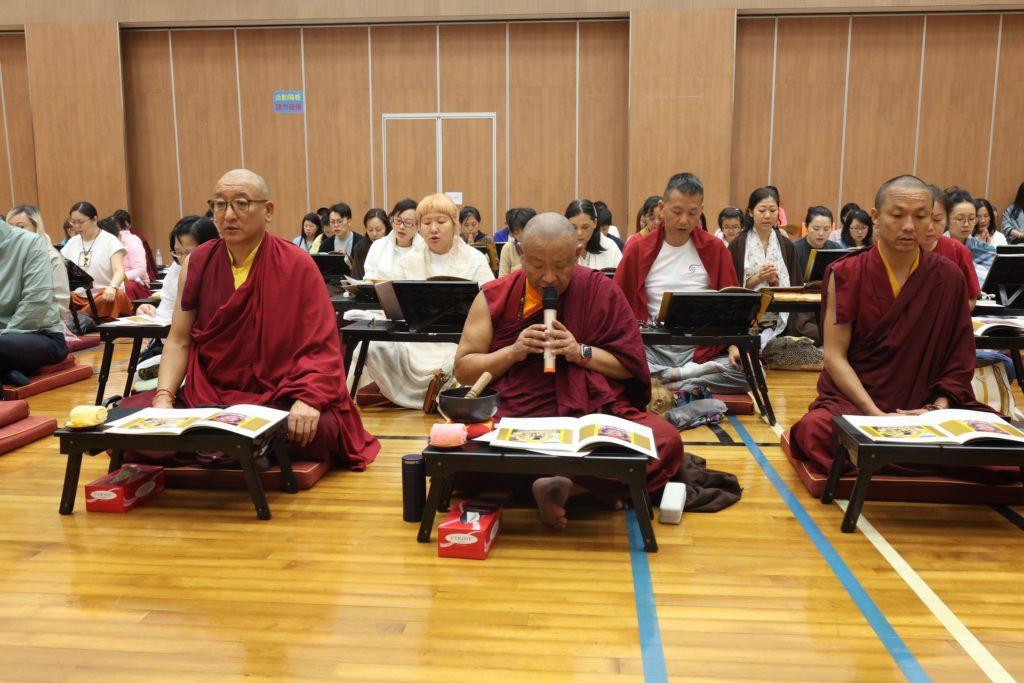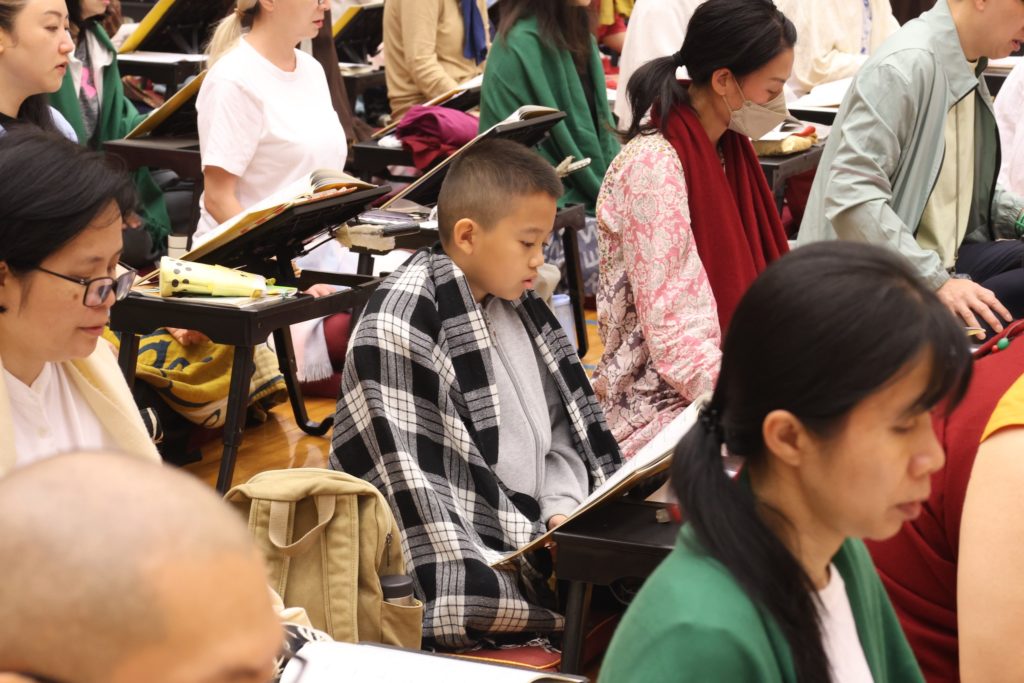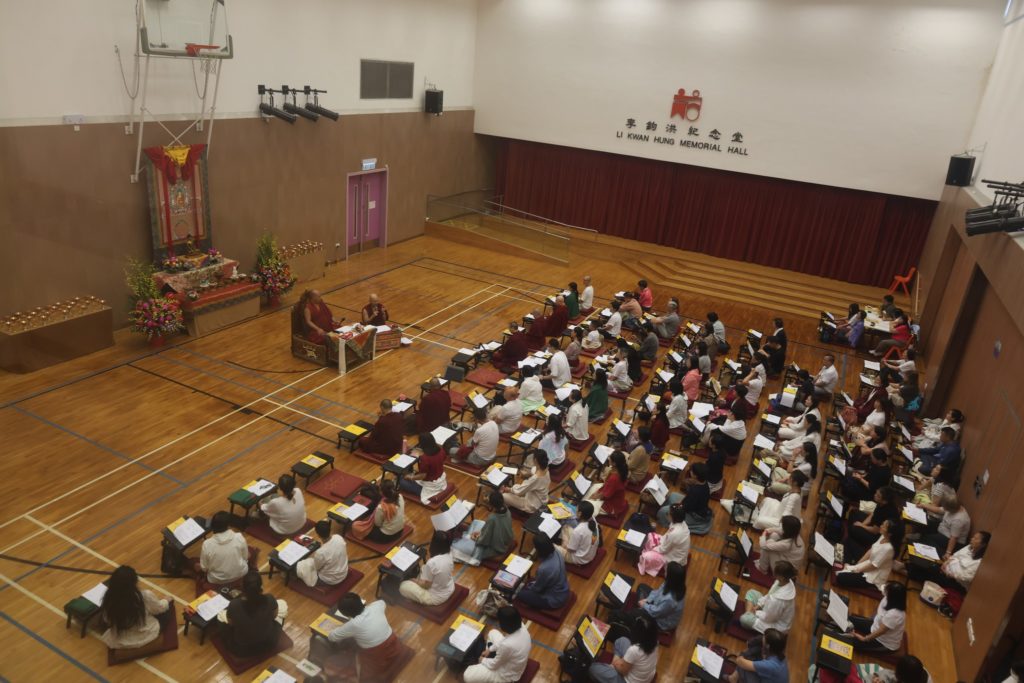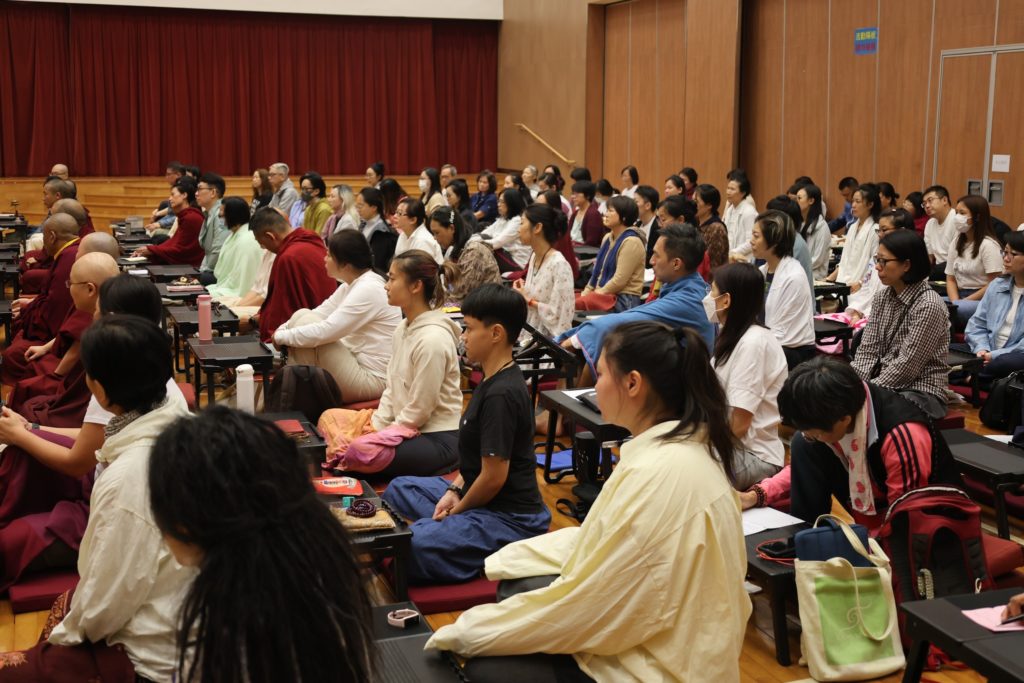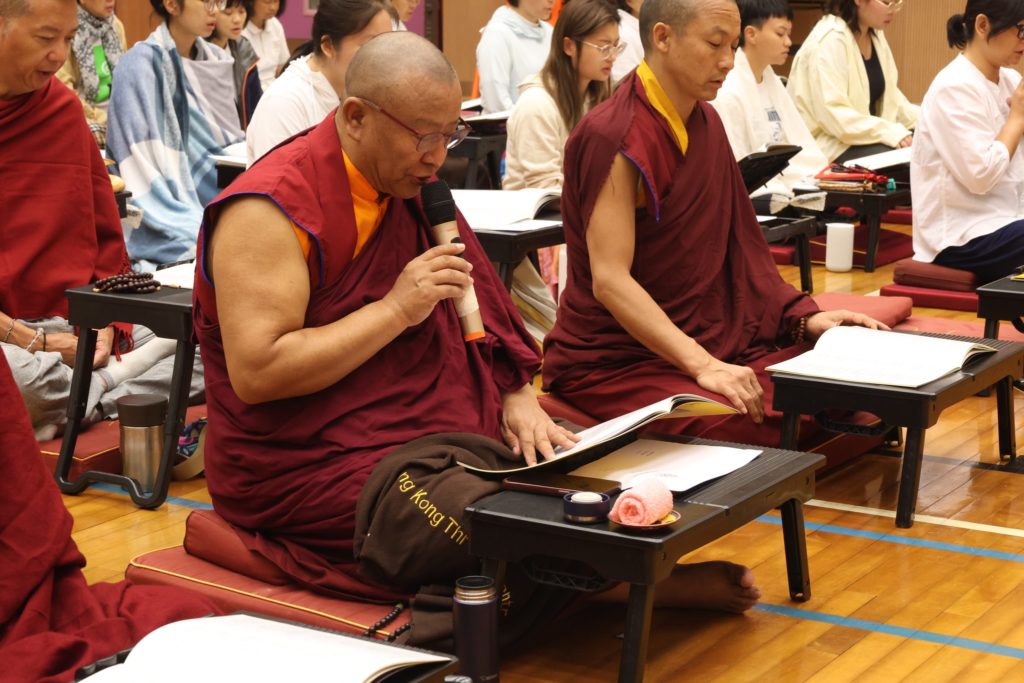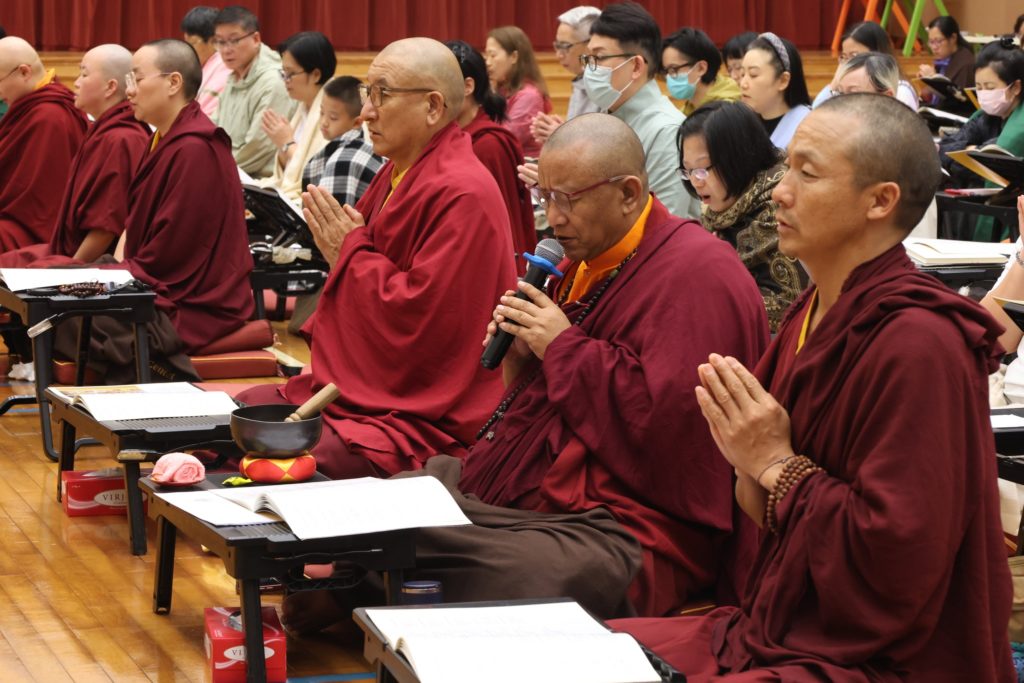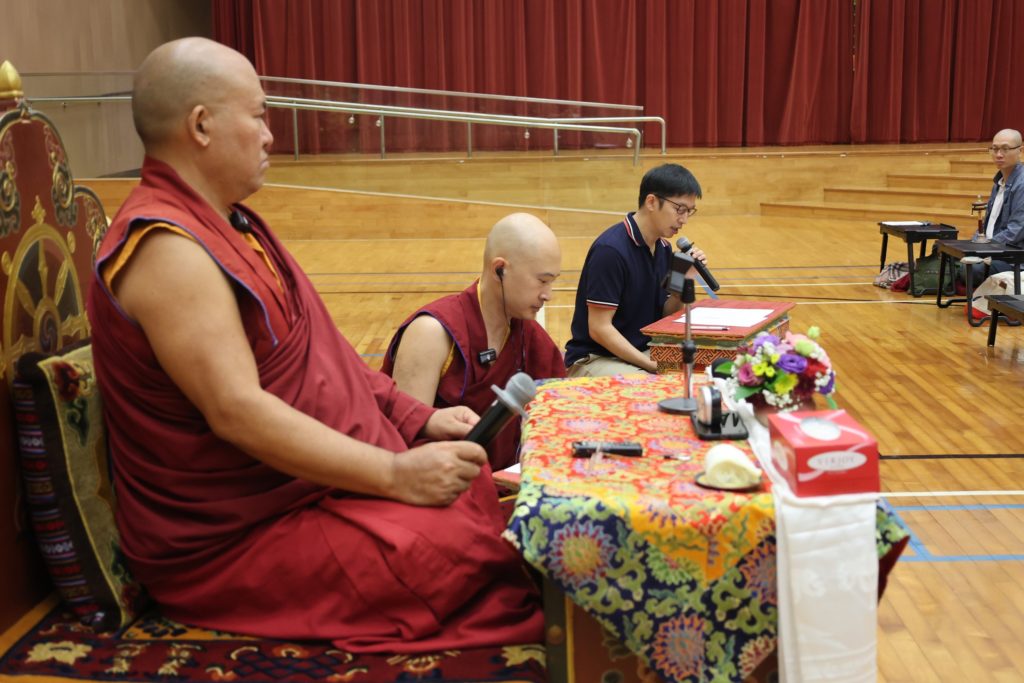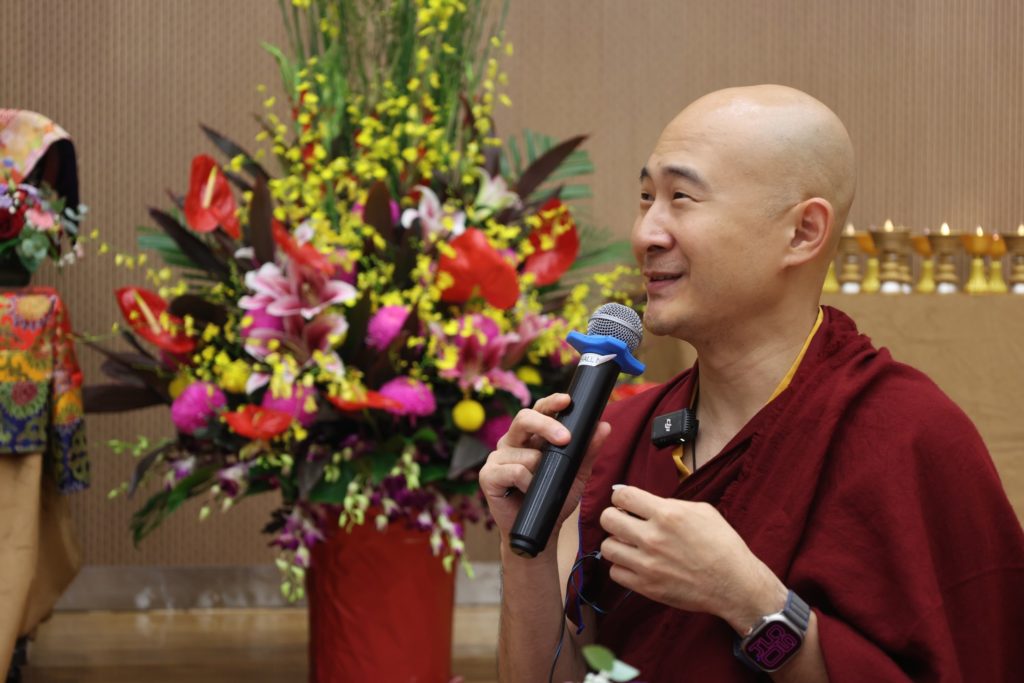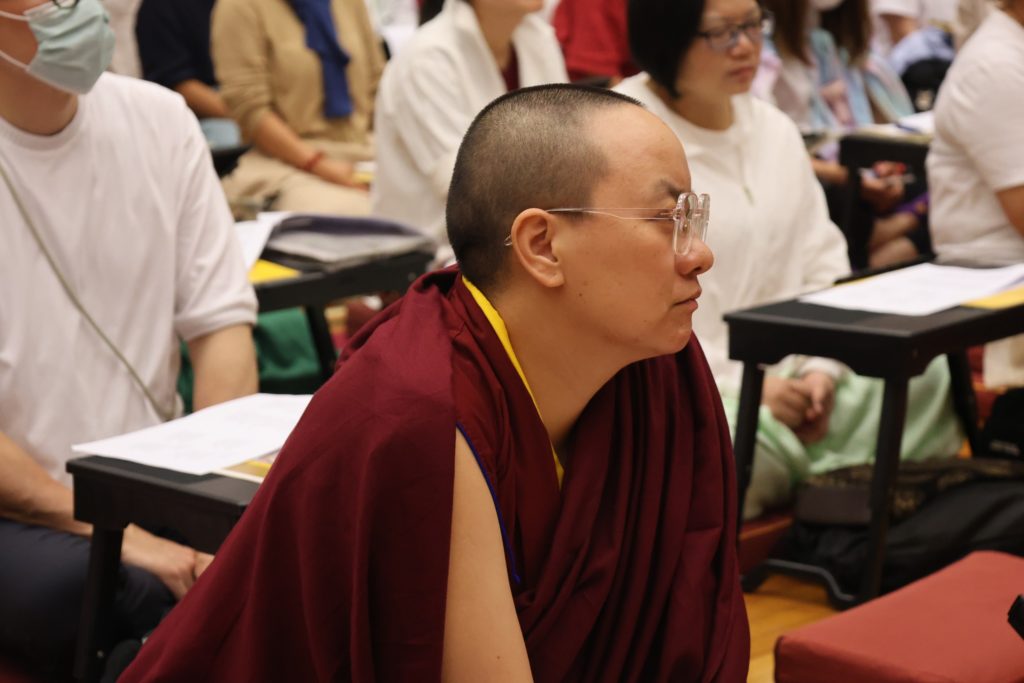Four Day Retreat & Teachings
Drupon Khen Rinpoche led practice sessions and gave teachings based on participants’ questions and his own thoughts about how best to pursue the path.
The teachings were translated into Mandarin by Khenpo Tengye and into Cantonese by Neil Tse.
Here is an excerpt from the teachings:
QUESTION: I experience lots of thoughts when I meditate. How can I deal with them?
ANSWER: We often ask questions like this without having looked into things carefully first ourselves. For example, what do you mean by ‘many’? What do you mean by ‘thoughts’?
When we learn the actual practice of meditation, the Great Seal or the Great Perfection, we undertake what is called ‘a study of mind’. This is where the lama gives a few initial instructions, and then we meditate and try to ascertain what thought is or whether the mind settles or not, depending on what the lama instructed. Then, that evening or the next day, we report to the lama, who asks us questions about our findings, which should give us food for further analysis. And this process continues until we ascertain the mind.
So, if you were to report to the lama that you had many thoughts in your meditation, he wouldn’t take what you said for granted. He would ask what you mean by ‘many’? For example, there are many people packed into this room. Is it like that; are the thoughts packed into your meditation? Are the thoughts present all at once? Or do they come one by one? If they come one by one, would we really call that ‘many’? If one person enters a room, leaves, and another enters, and that was to continue for fifteen minutes, would you say, ‘There were lots of people in the room’? If so, we can all say that we are rich because if we count all the money that we have ever owned and spent, it would amount to a lot. If that’s the way you determine ‘having lots,’ we are loaded.
In this approach, as long as the student is in the phase of trying to ascertain the mind, the lama will not explain anything regarding the mind, thoughts or meditation. If the student is not trying to ascertain the mind but is simply settling the mind, then the lama may explain or give an answer, taking the question at face value.
To answer your question from this perspective, the experience of many thoughts can be different for different levels of meditator. There is the type of person who never seriously meditates, and then when they sit down to try to meditate they experience lots of thoughts. This happens because they are always distracted and are mostly oblivious to what they think. This is the case for most of us. If we were asked what thoughts we had during the last 10 minutes, the vast majority of us would have very little to say.
Another type is someone who is a dedicated meditator and is exerting themselves to achieve meditation. One of the first signs of success in the stabilisation of mind is an increase in thoughts. Now, not only are they aware of the general thoughts we all experience, they now notice subtle, undercurrent thoughts. This is experienced as an increase but in truth it is just a clearer experience of what was always there, giving the impression of an increase in the number of thoughts.
I doubt you (the questioner) would fall into this second category.
One thing you must understand is that thoughts are not to be discarded. We can see this from the famous line in the Short Prayer of Vajradhara which reads, “The essence of all thought is dharmakaya,…” Needless to say, if we discard thought we also discard its essence.
For beginners thoughts can be distracting and do seem to be a hindrance. For someone who has generated some degree of meditation, thoughts are very helpful. They indicate to the meditator that they are becoming distracted and help sustain the meditation. For someone more advanced, thoughts themselves are what demonstrate the nature of mind and reality.
